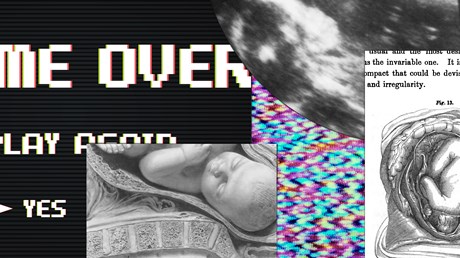From word pictures to video games, prenatal visualization technology has expanded our empathy for the unborn.

This article is the second of a four-part series based on the upcoming book by Marvin Olasky and Leah Savas, The Story of Abortion in America: A Street-Level History, 1652–2022.
Millions of expectant parents have now seen ultrasound video of their unborn children. The technology is new, but the desire to see what’s invisible is not. We can trace six steps in prenatal visualization technology during the past 170 years—and then wonder what the seventh will be.
The first three steps involved word pictures. Stephen Tracy’s The Mother and Her Offspring (1853) was one of the first books I’ve seen that took readers week by week and month by month through the early development of unborn children:
At forty-five days … the head is very large; the eyes, mouth, and nose are to be distinguished; the hands and arms are in the middle of its length—fingers distinct. … At two months, all the parts of the child are present. … The fingers and toes are distinct. … At three months, … the heart pulsates strongly, and the principal vessels carry red blood.
The second step emphasized woman-to-woman lectures about the unborn. In the 1850s Elizabeth Blackwell, the first female to receive a medical degree in the US, pleaded with mothers to “look at the first faint gleam of life, the life of the embryo. … The cell rapidly enlarges. … Each organ is distinctly formed. … It would be impious folly to attempt to interfere directly with this act of creation.”
In the 1860s Anna Densmore French explained fetal development to teachers who planned to pass on this knowledge to their teenage students. French said, “Women would rarely dare to destroy the product ...
from Christianity Today Magazine
Umn ministry


.gif)

.gif)
.gif)
